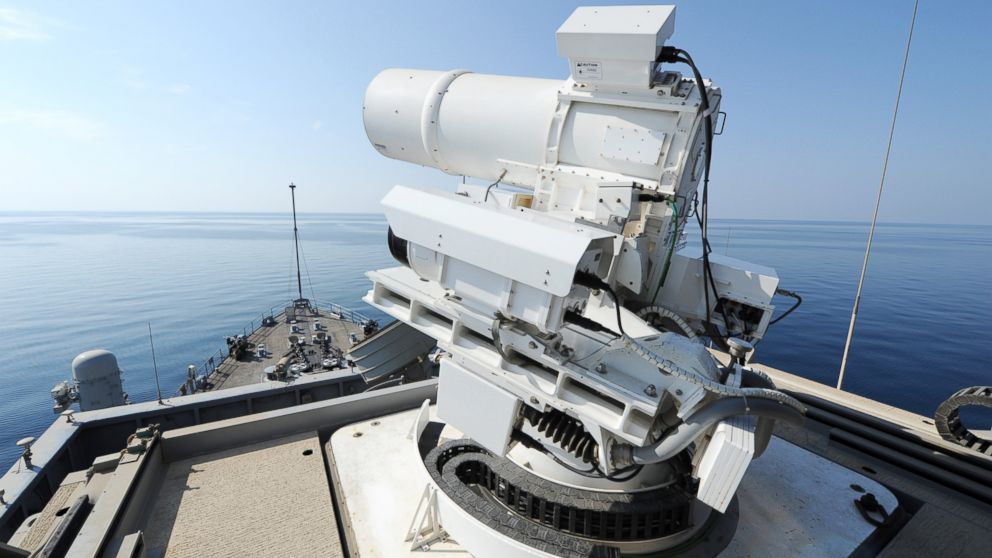See the Navy's New Futuristic Laser Weapon in Action
The system can disable incoming planes or speedboats with incredible precision.

— -- The U.S. Navy's new laser weapon is up and running in the Persian Gulf, and it is capable of disabling incoming planes or speedboats that could pose a threat to a ship by firing an invisible ray that can target engine systems with incredible precision, Pentagon officials said.
Officially known by its prosaic name, the Laser Weapons System (LaWS), the 30 kilowatt laser was deployed to the Persian Gulf in September for real-world testing of its capabilities aboard a fully functioning Navy ship, officials said.
The Navy's Office of Naval Research said it has done well in multiple types of testing aboard the USS Ponce, a vessel deployed year-round to the Persian Gulf.
While testing continues, the laser is now listed as operational and fully integrated into the weapons systems aboard the Ponce, where it will remain for the next year. "The reality is it's ready," said Rear Admiral Matthew Klunder, the chief of Naval Research. "It's part of the ship, it looks like it's part of the ship, and it is part of the ship."
U.S. Central Command has authorized the Ponce’s commander to use the laser weapon to defend itself if needed. The testing aboard the Ponce has also included targeting swarms of fast speedboats similar to the tactic used by Iranian speedboats that sometimes harass U.S. Navy vessels transiting into the Persian Gulf.
The Navy released a video of testing conducted in November that shows the speed and precision with which the energy beam can be used against incoming threats from the sea or air.
For example, the laser can be used to warn incoming boats or planes by focusing using a low intensity beam to "dazzle" them as a warning. If the warning is ignored, the laser's power can be boosted to disable an aircraft or speedboat that continues to approach the Ponce.
The video shows a Scan Eagle unmanned aerial vehicle crashing into the water two seconds after it is targeted, too fast for flames to develop aboard the drone. But enough time to burn the circuitry aboard the aircraft. "That tells you the power of this system," Klunder said.
The laser looks like a telescope and is paired with a long-range optical system that allows for precise targeting at a distance. The laser is controlled by a sailor who sits in front of monitors and uses a controller similar to those found on an XBox or PlayStation gaming systems.
Rear Admiral Bryant Fuller, deputy commander of ship design at Naval Sea Systems Command, said the controller design was a good fit for the targeting of multiple incoming targets. "This is a very user-friendly way to operate it," Fuller said. "It's efficient and of course the sailors coming up are well-versed at it, so they’re good at it and it’s pretty easy for them to pick up.”
Officials stressed that this weapon will not be used to directly target people on incoming ships or planes, but is designed to disable weapons systems or the crafts that could pose a threat to a ship.
In the video, a fast moving speedboat is seen with wooden cutouts mounted aboard to be representative of human forms. The laser can be seen targeting a precise spot on the moving craft away from the human cutouts.
The deployment of the laser weapon has cost $40 million so far and Klunder estimated that each laser burst costs 59 cents. The laser has been developed with unique technologies as well as off the shelf commercial technologies.
Klunder said his office is developing a more powerful laser weapon of 100 to 150 kilowatts that would have greater power and range that would be ready for testing as early as 2016.
He also said that there is testing underway to develop a laser weapon that could be placed aboard some Navy aircraft.




